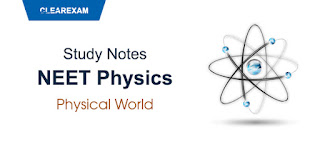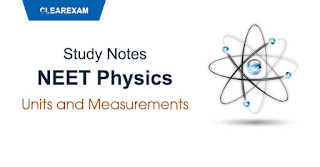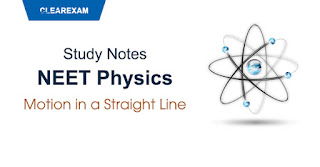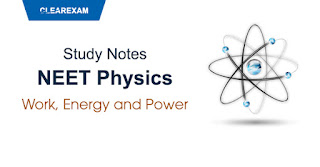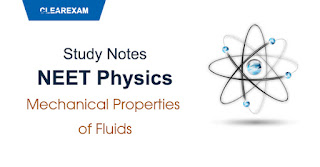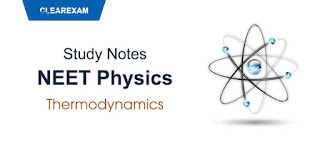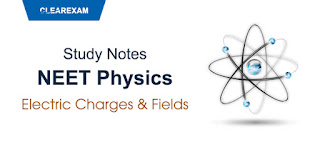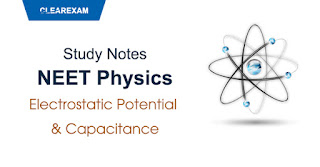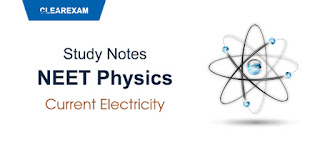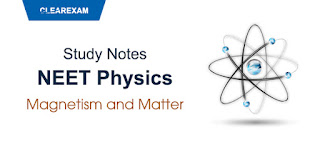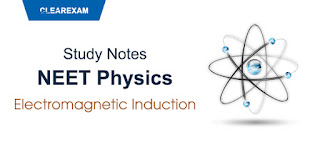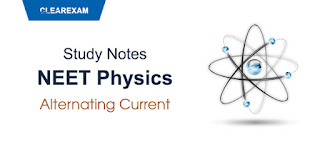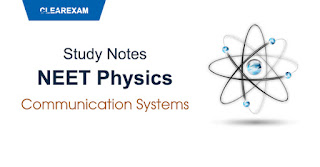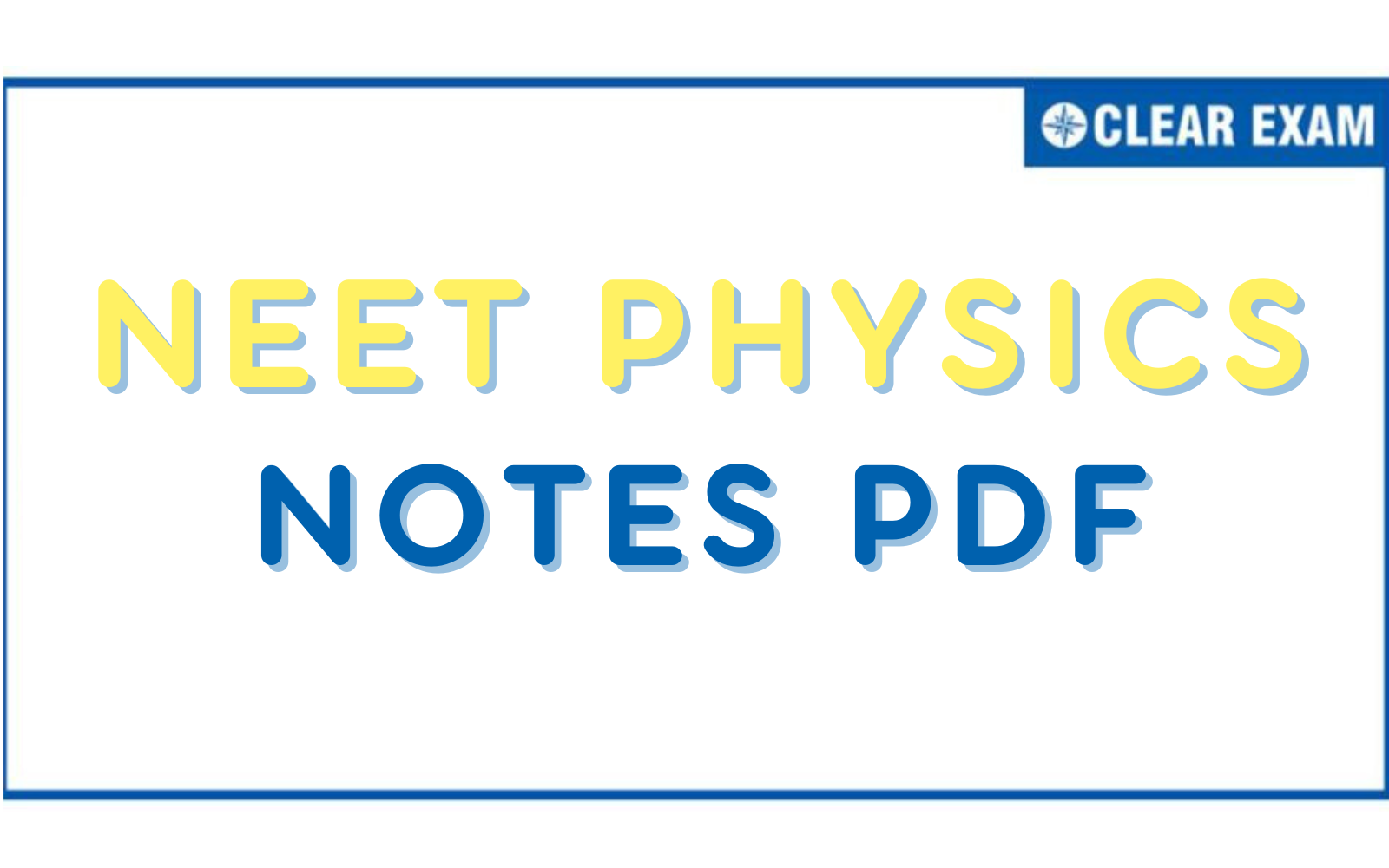
NEET Physics Study Notes PDF - Summary, Important Formula, Free Download
National Eligibility Cum Entrance (UG) Test 2024 (NEET - 2024) is an entrance exam that will be conducted for admissions into the MBBS, BDS Courses and other under graduate medical courses in the recognised and approved Medical, Pharma and Dental Institutes or Medical universities or Medical Colleges in India. Admissions to prestigious and renowned medical institutes or colleges like AIIMS, JIPMER, and others etc are done through this exam scores. The exam is conducted by the National Testing Agency (NTA) as per the syllabus and time schedule specified by the Medical Council of India (MCI). The NEET exam is conducted every year in the month of September, which is followed by counselling for qualified candidates as per the All India Rank Merit List released after the exam. In this article you will come across the details for NEET Physics Study Notes. The details and related help regarding physics like NEET physics study notes PDF free download and necessary content for Summary, Important formula has been provided here by the Clear Exam team. Please go through the article completely for the complete information about NEET Physics Study Notes PDF and instructions on how to utilize the NEET Physics Study Notes for a better preparation tips and strategies. This article also includes all the NEET physics syllabus from Class 11 and Class 12 NCERT physics Text books.
The following are all the contents of the article in a listicle manner:
How to prepare Physics Short Notes for NEET
Syllabus for NEET Physics
Easy, Difficult and Important Topics for Physics NEET:
Preparation Tips for preparing NEET physics
Reference Books for NEET physics:
About NEET
About NTA
After knowing the physics syllabus for NEET, it is necessary that every student gets his NEET Physics Short Notes prepares when he or she starts preparing for the highly competitive exam. These basic requirements while preparing NEET physics Study notes will make the preparation sound and proper for the students. Candidates or students can also click on the NEET physics study material free download PDF links for downloading the study material and NEET physics Study Notes PDF free download prepared by the Clear Exam Team. These NEET Physics Short Notes PDF will help students a lot in the preparation and swill ensure in staying ahead of the race. The following are some tips for students preparing Physics Study notes for NEET.
Prepare notes covering the whole syllabus:While preparing for NEET or any other competitive exam, one major mistake that the students or candidates or aspirants do is they do not understand the weight of each topic, and neglect certain topics or chapters while giving more time for the preparation of some topics which might be counter - productive. Firstly, students need to understand and stay aware of what topics have more weightage and what topics have limited weightage. Candidates or aspirants for NEET can also check this website and article for getting NEET physics Short notes from online and download the NEET physics Short Notes PDF. Students and aspirants for NEET must remember that the brief and short the notes are, the better it will be useful for them to prepare. When the NEET physics Study notes is made clear and concise, it helps so much during the time of revision and future reference.
Clear understanding of the topics or chapters:The NEET physics Short notes serves as a tool for revision and planned preparation any time before the exam date. It wouldn’t be easy to refer a big bundle of text book or reference book for any small point or sub topic in a sub chapter all the time. It is both time consuming and cumbersome. It is where a NEET physics short notes PDF free download and NEET Physics Study Notes study material free download PDF come useful. Students can also make their notes as per their comfort of understanding and simplicity. If the notes they make isn’t very clear and understandable, then the very process of making a note for preparation can go wasted. The entire strategy of referring to a simply made notes gets lost and it for the same reason that candidates are advised to make their notes as clear and simple as possible. The NEET Physics Short Notes PDF in this article serve all the basic requirements of a notes and students can make a best utilization of them. Candidates or aspirants can download them for free from the links available in this article as NEET Physics Notes PDF free download and NEET Physics Notes & study material free download PDF. Candidates and students can simply click on the links to download the required study material or notes very easily. These NEET physics Study notes will help them as much as a self made notes by the students. These are very clear and simple to understand.
Attempting Mock Tests after preparing Notes: After preparing notes, students will be able to attempt and answer the previous year papers and give Mock tests of NEET too. This will help them in identifying their strong and weak areas. After giving each preparation test it is very important to analyse the result. Each and every result of the practise or mock test gives many insights and inputs about where the candidate or aspirant is lacking in his or her preparation levels. Notes can then be used to revise and prepare for those topics and sub chapters which he or she might be scoring lesser. Revision from notes, Mock tests, and again revision, and so on; is the key to score higher and be a top ranker in a competitive exam such as NEET. Utilize the NEET physics Study notes PDF free download and NEET Physics Short Notes & study material free download PDF from the given links in this article and avail the best notes and preparation tips from the Clear Exam website.
Whether it's a test or a competitive exam, notes play an important role in every preparation! That's why ClearExam takes care of your NEET Exam Preparation by offering Shorts notes for NEET & NCERT Short Notes PDF for Physics, Chemistry, and Biology for NEET PDF Including Summary & Important formulae.
In the following section, the entire Physics syllabus for NEET has been given in a listed format, with each and every unit separation. Also, the Class 11 and Class 12 topics are separately given in an orderly manner. The following syllabus will help the candidates to have a NEET Physics Study Notes with a proper and planned format.
Class 11 Physics syllabus for NEET has the topics of The Physical World and Measurement, Kinematics, The Laws of Motion, Work & energy & Power, Motion of systems of particles and rigid body, Gravitation, Properties of Bulk Matter, Thermodynamics, Behaviour of Perfect gas and kinetic Theory, Oscillations and Waves. All these topics have several sub topics as part of NEET Physics Syllabus and they need to be prepared well for scoring well in NEET Exam. You can find the topic wise weightage approximately for each of these topics at the end of each of the units from NEET Physics Syllabus.
|
UNIT 1 – The Physical World, Units and Measurements |
|
|
S.No. |
Topics / Concepts / Chapters |
|
1 |
The Scope of Physics, and Excitement of Physics |
|
2 |
The Nature of the Laws of Physics |
|
3 |
The concepts of Physics, the Technology, and the Society |
|
4 |
The need for Measurements, and the units of Measurement |
|
5 |
The systems of units, Fundamental Units, Derived Units, SI Units, and CGS Units of Measurement |
|
6 |
Measurements of Length, Measurements of Mass, Measurements of Time |
|
7 |
Accuracy of Measuring Instruments, Precision of Measuring Instruments |
|
8 |
Errors of Measurement, Common errors in Measurement |
|
9 |
Significant Figures |
|
10 |
Physical Quantities and Dimensions of Physical Quantities |
|
11 |
Dimensional Analysis |
|
12 |
The Applications of Dimensional Analysis |
|
Weightage – 0 to 1 question, 2 % weightage (approximate) |
|
|
UNIT 2 – Kinematics |
|
|
S.No. |
Topics / Concepts / Chapters |
|
1 |
Frames of Reference |
|
2 |
Straight line motion |
|
3 |
Speed and Velocity, Position and Time Graph |
|
4 |
Uniform Motion and Non - Uniform Motion, Average Speed, Average velocity, Instantaneous Velocity |
|
5 |
Uniformly Accelerated Motion |
|
6 |
Velocity & Time Graphs, and Position & Time Graphs for a uniformly accelerated motion, Graphical Treatment |
|
7 |
Elementary level concepts of Differentiation and Elementary Concepts of Integration for describing Motion |
|
8 |
Introduction to the Scalar quantities and the Vector Quantities |
|
9 |
Position and Displacement Vectors, General Vectors, General Vector Notation, Vectors and Equality of Vector quantities, Multiplication of Vector quantities by a real Number, Addition of Vector Quantities and Subtraction of vector Quantities |
|
10 |
Relative Velocity |
|
11 |
Unit Vectors |
|
12 |
Resolution of a Vector Quantity in a single Plane, finding rectangular quantities of a vector quantity |
|
13 |
Product of Scalar quantities and vector quantities |
|
14 |
Motion in a Plane |
|
15 |
Projectile Motion |
|
16 |
Uniform Circular Motion |
|
Weightage – 1 question, 3 %weightage (approximate) |
|
|
UNIT 3 – Laws of Motion |
|
|
S.No. |
Topics / Concepts / Chapters |
|
1 |
Force, Intuitive concept of Force |
|
2 |
Concept of Inertia |
|
3 |
Newton’s 1st Law of Motion |
|
4 |
Concept of Momentum, Newton’s 2nd Law of Motion |
|
5 |
Concept of Impulse, Newton’s 3rd Law of Motion |
|
6 |
Law of Conservation of Linear Momentum, Applications of the Law of Conservation of Momentum |
|
7 |
Concept of Concurrent Forces, Equilibrium of Concurrent forces |
|
8 |
Concept of Friction, Types of Friction – Static Friction Concept, Kinetic Friction Concept, Laws of Friction, Rolling Friction Concept, Lubrication Concept |
|
9 |
Dynamics of the Uniform Circular Motion |
|
10 |
Centripetal Forces Concept, Circular Motion, Examples of Circular Motion, Vehicle behaviour on a Level circular Road, and Vehicle behaviour on a banked Road |
|
Weightage – 1 question, 3 % weightage (approximate) |
|
|
UNIT 4 – Work Energy and Power |
|
|
S.No. |
Topics / Concepts / Chapters |
|
1 |
Constant Force Concept, Variable Force Concept, and Work done by a Constant Force |
|
2 |
Theorem of Work Energy, Power Concept, and Kinetic Energy Concept |
|
3 |
Potential Energy concept, Potential Energy in a spring (Unloaded Spring and loaded Spring), Conservative Force Concept |
|
4 |
Mechanical Energy (Kinetic Energy and Potential Energy), The Priciple of Conservation of Mechanical Energy |
|
5 |
Non - Conservation Forces Concept |
|
6 |
Motion in the form of a Vertical Circle |
|
7 |
Collisions Concepts, Collisions in 1 Dimension, and 2 dimensions |
|
Weightage – 1 question, 4 %weightage (approximate) |
|
|
UNIT 5 – Motion of System of Particles and Rigid Bodies |
|
|
S.No. |
Topics / Concepts / Chapters |
|
1 |
Centre of Mass Concepts, Introduction |
|
2 |
Centre of Mass of a Two - particle System |
|
3 |
Centre of Mass of a rigid body |
|
4 |
Centre of mass of a Uniform rod - Shaped body |
|
5 |
Torque Concept, and Angular Momentum Concept |
|
6 |
Moment of a Force, Torque and Angular Momentum Concept |
|
7 |
The principle of Conservation of Angular Momentum, and Some examples of the principle of conservation of Angular Momentum |
|
8 |
Rigid Body, Equilibrium of a rigid Body |
|
9 |
Rotational Motion, and Equation concept of Rotational Motion |
|
10 |
Linear Motion and Rotational Motion concepts, Comparison of the Linear motion and rotational motion |
|
11 |
Inertia Concept, and Moment of Inertia Concept |
|
12 |
The concept of Radius of Gyration (K) |
|
13 |
Values of the Moment of Inertia (M.I) for a simple shaped geometrical object |
|
14 |
The Statement of Parallel Axis Theorem and Perpendicular Axis Theorem, Applications of the Statement of Parallel Axis Theorem and Perpendicular Axis Theorem |
|
Weightage – 1 to 2 question, 5 % weightage (approximate) |
|
|
UNIT 6 – Gravitation |
|
|
S.No. |
Topics / Concepts / Chapters |
|
1 |
The Kepler’s Laws of Planetary Motion, and the Introduction of Gravitational concepts |
|
2 |
The universal Law of Gravitation |
|
3 |
Gravity Concepts, Acceleration due to Gravity (g), Variation of Acceleration due to gravity (g) with Altitude, Variation of Acceleration due to gravity (g) with Depth |
|
4 |
Gravitational Energy Concept, Gravitational Potential Energy Concept, and the concept of Gravitational Potential |
|
5 |
The concept of Escape velocity of a satellite, The concept of Orbital Velocity of a satellite |
|
6 |
Geostationary Satellite and their principle of Working and operation concepts |
|
Weightage – 0 to 1 question, 2 % weightage (approximate) |
|
|
UNIT 7 – Properties of Bulk Matter |
|
|
S.No. |
Topics / Concepts / Chapters |
|
1 |
Solids and the elastic behaviour of Solids |
|
2 |
Stress Concept and Strain Concept, the relationship between the Stress and Strain functions |
|
3 |
The Hooke’s Law |
|
4 |
Young’s Modulus (E), and Bulk Modulus (K), and the Shear Modulus |
|
5 |
Poisson’s Ratio |
|
6 |
Elasticity Concept, Elastic Energy |
|
7 |
Viscosity Concept, and the Stokes’ Law |
|
8 |
Terminal Velocity Concept, Reynold’s Number, and the significance of Reynold’s number |
|
9 |
Flow Concept, Streamline Flow Concept, and Turbulent Flow Concept |
|
10 |
Critical Velocity concept, and the significance of Critical Velocity |
|
11 |
Bernoulli’s Theorem, and Applications of the Bernoulli’s Theorem |
|
12 |
The Concept of Surface Energy, and the concept of Surface Tension, Angle of Contact (AOA) Concept, Excess of Pressure, Application of Surface tension concept to Drops, Application of Surface tension concept to bubbles, Application of Surface tension concept to Capillary rise (in a Capillary tube) |
|
13 |
The concept of Temperature, and the concept of heat |
|
14 |
Introduction to the concept of Thermal Expansion, Principle of thermal expansion of solids, Principle of thermal expansion of liquids, Principle of thermal expansion of gases |
|
15 |
Anomalous Expansion Concept |
|
16 |
Specific Heat Capacity, definition and principle of specific heat, different kinds of specific heats, Specific heat at constant pressure (Cp), and specific heat at constant volume (Cv) |
|
17 |
Calorimetry and its related Concepts, |
|
18 |
Change of State concept, and the concept of latent heat (LH) |
|
19 |
Introduction to Heat Transfer concepts, Conduction of heat energy, convection of heat energy, radiation of heat energy, Thermal Conductivity (K) |
|
20 |
Black Bodies, Black Body radiation and its qualitative ideas, |
|
21 |
The law of Wein’s Displacement, and the Green House Effect |
|
22 |
Newton’s law of cooling, and Stefan’s Law |
|
Weightage – 1 question, 3 % weightage (approximate) |
|
|
UNIT 8 – Thermodynamics |
|
|
S.No. |
Topics / Concepts / Chapters |
|
1 |
The Concept of Thermal Equilibrium |
|
2 |
Introduction to the idea of temperature, and the Zeroth Law of Thermodynamics |
|
3 |
Heat Energy, and Work Energy, and Internal Energy |
|
4 |
The First law of Thermodynamics |
|
5 |
Isothermal Process, Adiabatic Process |
|
6 |
The Second Law of Thermodynamics |
|
7 |
Reversible Process, and Irreversible Process |
|
8 |
Heat Engines and their principle of working, Refrigerators and their principle of working, Work done and efficiency concepts in a Heat Engine, Work done and Coefficient of Performance (COP) concepts in a Refrigerator |
|
Weightage – 2 questions, 9 % weightage (approximate) |
|
|
UNIT 9 – Behaviour of a Perfect Gas and the Kinetic theory of gases |
|
|
S.No. |
Topics / Concepts / Chapters |
|
1 |
Perfect gases, Equation of State with respect to a perfect gas |
|
2 |
Work Done in compression of a gas |
|
3 |
Kinetic Theory of Gases, Assumptions of Kinetic Theory of Gases, the concept of pressure |
|
4 |
Kinetic Energy of gases, and temperature of gases |
|
5 |
Degrees of freedom concept introduction, and the degrees of freedom of gases |
|
6 |
The Law of Equipartition of energy |
|
7 |
Specific Heat capacity of a gas, Applications of the specific heat capacity of gases |
|
8 |
Concept of Mean free Path (MFP) |
|
Weightage – 1 question, 3 % weightage (approximate) |
|
|
UNIT 10 – Oscillations theory and Waves theory |
|
|
S.No. |
Topics / Concepts / Chapters |
|
1 |
Periodic Motion, Period of a Periodic motion, Frequency of a Periodic motion, and Displacement as a function of Time |
|
2 |
Periodic Function |
|
3 |
Simple Harmonic Motion (SHM), and the Equation of a Simple Harmonic Motion (SHM) |
|
4 |
Oscillations in a spring, restoring force of a spring, and the concept of Force Constant with respect to springs |
|
5 |
Energy in a Simple Harmonic Motion (SHM), Kinetic Energy in a Simple Harmonic Motion (SHM), Potential Energy in a Simple Harmonic Motion (SHM) |
|
6 |
Simple Pendulum, Oscillations and motion of a Simple Pendulum, Derivation of the expression for the time period of a Simple Pendulum motion |
|
7 |
Free Oscillations, Forced Oscillations, and Damped oscillations |
|
8 |
Resonance theory |
|
9 |
Wave Motion theory |
|
10 |
Longitudinal waves, and Transverse Waves |
|
11 |
Wave motion, Speed of a Wave Motion |
|
12 |
Progressive Wave, Displacement relation for a progressive wave |
|
13 |
The principle of Superposition of waves |
|
14 |
Waves, and the Reflection of Waves |
|
15 |
Waves in a String, standing waves in strings, and Standing waves in organ pipes |
|
16 |
Modes, Fundamental Mode, Harmonics |
|
17 |
Beats |
|
18 |
The Doppler Effect |
|
Weightage – 1 question, 3 % weightage (approximate) |
|
In the following section, the entire Physics syllabus for NEET has been given in a listed format, with each and every unit separation. Also, the Class 12 topics are separately given in an orderly manner.
Class 12 Physics syllabus for NEET comprises of the topics of Electro Statics, Current Electricity, Magnetic Effects of Current and magnetism, Electromagnetic Induction and Alternating Currents, Electromagnetic waves, Optics, Dual Nature of the Matter and radiation, Concepts of Atoms and Nuclei, and Electronic Devices. All these topics have several sub topics as part of NEET physics syllabus and they need to be prepared well for scoring well in NEET Exam. You can find the topic wise weightage approximately for each of these topics at the end of each of the units from NEET Syllabus Physics.
|
UNIT 1 – Electro-Statics |
|
|
S.No. |
Topics / Concepts / Chapters |
|
1 |
Introduction to the concept of Electric Charge, Electric Charge conservation |
|
2 |
Coulomb’s Law of Electric charges, Force between two different point charges at a distance, forces between many or multiple charges |
|
3 |
The principle of Superposition, Continuous charge distribution. |
|
4 |
Electric Field, Electric Field due to a single point charge, and Electric Field Lines |
|
5 |
Electric Dipole, and Electric Field due to a Dipole |
|
6 |
Uniform Electric Field, Torque on a Dipole in a Uniform Electric Field |
|
7 |
Electric Flux Concept |
|
8 |
Guass’s Theorem, Applications of Guass’s Theorem in finding field due to an infinitely long straight-lined wire, Applications of Guass’s Theorem in finding field due to a Uniformly charged infinite plane sheet body, Applications of Guass’ Theorem in finding field due to a uniformly charged thin spherical shell (Field Inside and Field Outside) |
|
9 |
Electric Potential Concept, and Potential Difference between two points |
|
10 |
Electric potential due to a point charge, Electric potential due to a dipole, Electric potential due to a system of charges |
|
11 |
Equipotential Surface Concept |
|
12 |
Electric potential energy of a system of two-point charges, Electric potential energy of electric dipoles in an Electrostatic field |
|
13 |
Conductors, and Insulators concepts |
|
14 |
Free charges inside a conductor, Bound charges inside a conductor |
|
15 |
Dielectric Media, and Polarization concepts |
|
16 |
Capacitors, and Capacitance concepts |
|
17 |
Capacitors combination in a series connection, Capacitors combination in a parallel connection |
|
18 |
Capacitance of a parallel plate capacitor with a dielectric medium between the plates, Capacitance of a parallel plate capacitor without a dielectric medium between the plates |
|
19 |
Energy stored in a capacitor |
|
20 |
Van De Graaff Generator |
|
Weightage – 2 questions, 9 % weightage (approximate) |
|
|
UNIT 2 – Current Electricity |
|
|
S.No. |
Topics / Concepts / Chapters |
|
1 |
Electric Current, Definition and Concepts of Electric Current, Flow of charges and behaviour in a metallic conductor, Drift Velocity and its relation with electric current, Mobility concept and its relation with electric current |
|
2 |
Ohm’s Law, Electric Resistance, Electric potential and Electric Current (V-I) linear and Non-linear Characteristics, Electrical Energy, Electrical Power, Electrical Resistivity, Electrical Conductivity |
|
3 |
Carbon Resistors, Colour coding for carbon resistors, Series Combinations of resistors, and Parallel Combinations of resistors, The temperature dependency of resistance |
|
4 |
Internal Resistance in a cell, Potential Difference of a cell, Electro Motive Force (EMF) of a cell, Combinations of cells, Series combination of cells, and parallel combination of cells |
|
5 |
Kirchhoff’s Laws, and the Applications of Kirchhoff’s laws |
|
6 |
Wheatstone Bridge Connection and circuit, Meter Bridge connection and circuit |
|
7 |
Potentiometer, Principle of a potentiometer, Applications of a potentiometer to measure potential difference, and for comparing Electro Motive Force (EMF) of two cells, Measurement of the internal resistance of a cell |
|
Weightage – 2 questions, 8 % weightage (approximate) |
|
|
UNIT 3 – Magnetic Effects of Current, Magnetism |
|
|
S.No. |
Topics / Concepts / Chapters |
|
1 |
Oersted’s Experiment and its significance, Concepts of Magnetic Field |
|
2 |
Biot – Savart law, and the Application of Biot – Savart law to a current carrying loop |
|
3 |
Ampere’s Law, the application of Ampere’s law to an infinitely long straight wire, the application of Ampere’s law to a straight solenoid, and the application of Ampere’s law to a toroidal solenoid |
|
4 |
Force on a Moving charge in uniform Electric Field, Force on a Moving charge in uniform Magnetic field |
|
5 |
Cyclotron |
|
6 |
Force on a current carrying conductor in a uniform magnetic field |
|
7 |
Force between 2 parallel current carrying conductors, and the definition of an Ampere |
|
8 |
The torque experienced by a current loop in a magnetic field |
|
9 |
Moving coil galvanometer, Sensitivity of current, and conversion to Ammeter, and conversion to a voltmeter |
|
10 |
A current loop as a magnetic dipole, magnetic dipole moment of a current loop |
|
11 |
Magnetic dipole moment of a revolving electron |
|
12 |
Magnetic Field Intensity due to a magnetic dipole (a bar magnet) along its Axis, Magnetic Field Intensity due to a magnetic dipole (a bar magnet) perpendicular to its axis |
|
13 |
Torque on a magnetic dipole (a bar magnet) in a uniform magnetic field, a Bar Magnet as an equivalent solenoid, Magnetic lines of field, Magnetic field of earth, Magnetic Elements of Earth |
|
14 |
Para Magnetic Substances, Dia Magnetic substances, Ferro Magnetic Substances, Examples of Para Magnetic Substances, Examples of Dia Magnetic substances, Examples of Ferro Magnetic Substances |
|
15 |
Electro Magnetic properties, and the factors that affect their strengths |
|
16 |
Permanent Magnetism, Permanent magnets in the nature |
|
Weightage – 1 question, 5 % weightage (approximate) |
|
|
UNIT 4 –Electromagnetic Induction, and Alternating Current (A.C. Current) |
|
|
S.No. |
Topics / Concepts / Chapters |
|
1 |
Electromagnetic Induction |
|
2 |
Faraday’s laws, Induced EMF and Induced current flow |
|
3 |
Lenz’s Law, Eddy Current |
|
4 |
Self-Inductance, Mutual Inductance |
|
5 |
Alternating Currents, Peak Value of alternating Current, Peak Value of Alternating Voltage |
|
6 |
Reactance, and Impedance |
|
7 |
LC Oscillations, LCR Series Circuit, Resonance |
|
8 |
Power in an AC Circuit, Watt-less Currents |
|
9 |
AC Generator or an Alternator, AC Transformer |
|
Weightage – 2 questions, 8 % weightage (approximate) |
|
|
UNIT 5 – Electromagnetic Waves |
|
|
S.No. |
Topics / Concepts / Chapters |
|
1 |
The need for Displacement Current |
|
2 |
Electromagnetic waves, Characteristics of Electromagnetic waves |
|
3 |
The transverse nature of Electromagnetic waves |
|
4 |
Electromagnetic Spectrum, elementary facts about Electromagnetic Spectrum, Uses of Electromagnetic Spectrum (Micro waves, X – Rays, Radio waves, Infrared Rays, Visible Radiation, Ultraviolet Rays, X-rays, Gamma rays) |
|
Weightage – 1 question, 5 % weightage (approximate) |
|
|
UNIT 6 – Optics |
|
|
S.No. |
Topics / Concepts / Chapters |
|
1 |
Introduction to Optics theory, Reflection of Light, Mirrors, Different shapes and types of Mirrors, Spherical Mirrors, Mirror Formula |
|
2 |
Refraction theory of light, Total Internal Reflection of Light (TIR), Applications of the Total Internal reflection of light, Optical Fibres, Refraction at spherical surfaces, Lenses, Types of Lenses, thin lens formula, lens maker’s formula |
|
3 |
Magnification concept, Power of a lens, Combination of thin lenses in contact, Combination of a lens and a mirror |
|
4 |
Refraction of light through a prism, dispersion of light through a prism |
|
5 |
Scattering concept of light, Reasons and science behind the Blue colour of sky, Reasons and science behind the reddish appearance of the Sun at sunrise and sunset |
|
6 |
Human Eye, Optical instruments, Image formation and accommodation in a human eye, Image formation and accommodation in Optical instruments, Defects of a Human Eye, Correction of Eye Defects (Myopia and Hypermetropia) using lenses |
|
7 |
Microscopes and astronomical telescopes, Reflection and refraction applications in Microscopes and astronomical Telescopes, Magnifying powers of microscopes and astronomical telescopes |
|
8 |
Wave Optics theory, Wavefront Concepts, Huygen’s Principle |
|
9 |
Reflection of a plane wave at a plane surface using wavefronts, Refraction of a plane wave at a plane surface using wavefronts |
|
10 |
Proofs of Laws of Reflection using Huygen’s Principle, Proofs of Laws of Refraction using Huygen’s Principle |
|
11 |
Interference Concepts, Young’s Double slit experiment, Expression for Fringe width, Coherent Sources of light, Sustained Interferences of Light |
|
12 |
Diffraction due to a single slit, Width of a central maximum |
|
13 |
Resolving power of Microscopes, Resolving power of astronomical telescopes |
|
14 |
Polarization, Plane Polarized light |
|
15 |
Brewster’s law, Uses of Plane polarized light, uses of Polaroids |
|
Weightage – 2 questions, 10 % weightage |
|
|
UNIT 7 – Dual Nature of Matter and Radiation |
|
|
S.No. |
Topics / Concepts / Chapters |
|
1 |
The concept of Photo Electric Effect, Hertz observations, Lenard’s Observations |
|
2 |
Einstein’s Photo Electric Equation and theory, introduction to the particle nature of light |
|
3 |
Matter Waves, Wave nature of particles, and the De Broglie Equation |
|
4 |
Davisson and Germer Experiment (Experimental theory and conclusion) |
|
Weightage – 2 questions, 6 % weightage (approximate) |
|
|
UNIT 8 – Atoms and Nuclei |
|
|
S.No. |
Topics / Concepts / Chapters |
|
1 |
The Alpha particle scattering experiment |
|
2 |
Rutherford’s Model of an atom |
|
3 |
Bohr’s Model, Energy Levels in an Atom, Hydrogen Spectrum |
|
4 |
Composition of a Nucleus, Size of a Nucleus, Atomic Mass Concept, Isotopes, Isobars, and Isotones |
|
5 |
Radioactivity concept, Alpha particles and rays, Beta Particles and rays, and gamma Particles and rays, and the properties of Alpha particles and rays, the properties of Beta Particles and rays, and the properties of gamma Particles and rays |
|
6 |
The Mass and Energy Relation or the Equation, Mass Defect |
|
7 |
Nuclear Binding Energy per nucleon, and the Variation of Nuclear binding energy per nucleon with mass number |
|
8 |
Nuclear Fission Theory, Nuclear Fusion Concept |
|
Weightage – 1 question, 3 % weightage (approximate) |
|
|
UNIT 9 – Electronic Devices |
|
|
S.No. |
Topics / Concepts / Chapters |
|
1 |
Energy Bands in Solids, Conductors, Insulators, and Semi-Conductors |
|
2 |
Diodes, Semiconductor Diodes, I-V Characteristics in a forward bias condition, I-V Characteristics in a reverse bias condition, Usage of diode as a Rectifier, I-V Characteristics of an LED, Photodiode, Solar Cells, Zener Diodes, Usage of Zener Diode as a Voltage regulator |
|
3 |
Junction Transistor, Action of a Transistor, Characteristics of a transistor, Transistor as an amplifier in Common emitter configuration, Transistor as an Oscillator, Transistor as a switch |
|
4 |
Logic Gates, Uses or applications, OR Gate, AND Gate, NOT Gate, NAND Gate, and NOR Gate |
|
Weightage – 2 questions, 9 % weightage (approximate) |
|
All the topics and chapters in the above syllabus are given with their individual weightages as per the previous year NEET papers. Clear Exam hopes that the above given information and syllabus will be helpful for the students and aspirants to prepare their own notes or refer to the notes provided in this article under the links NEET Physics Notes PDF free download and NEET physics Notes & study material free download PDF.
There are several topics and chapters for the NEET exam and identifying what topics are easy and difficult for a student is very important and essential for preparing accordingly. What a student considers easy might not be easy for the others, and the same with difficult topics or chapters. But in general, the following are some topics that might be found to be easy and difficult by many students preparing for NEET and even JEE. These topics are all from the Class 11 and Class 12 syllabus as we mentioned above with a detailed syllabus listicle.
Easy Topics – Motion in one dimension, Atomic Structure in Modern Physics, Gravitation, Wave optics, Semiconductors and communication systems.
Difficult Topics or chapters - Current Electricity, Magnetic Effects of Current, Wave theory and Sound theory, Properties of matter and fluid mechanics, Laws of Thermodynamics, Rotational Motion, Ray Optics, Heat Transfer, Circular Motion, Newton’s Laws of Motion.
All the NEET Physics Notes made by our team are involving the above topics and also those not classified as important or easy or difficult. All the above topics or chapters can be understood to be very important and carrying heavy weightage.
After knowing the NEET physics syllabus and preparing NEET Physics Notes, it is necessary for every candidate or aspirate of NEET to start preparing with a clear plan in the mind. Clear Exam can help any NEET aspirant in the same and guide the student. The following are some of the tips that any NEET aspirant can follow to ace in the physics section of NEET, by following the NEET physics notes section. Almost 80 % – 85 % of the total questions in NEET physics have an easy to moderate level of difficulty. Mechanics and Electricity form the major and key parts in the NEET physics syllabus. And a large part of questions is numerical type of questions. Making a table while preparing and several other strategies help a lot for the preparation of Physics syllabus for NEET.
Understanding and complete awareness of the NEET physics Syllabus.
Knowing the NEET exam pattern well in advance.
Knowing about the marking scheme of NEET exam.
Referring to only proper and genuine reference books for NEET Physics Notes.
Downloading NEET Physics Notes PDFfrom the Clear Exam website.
Preparing own comfortable set of NEET physics notesif required.
Practicing and giving more and more of NEET previous year papers and Mock tests. Students and candidates can also attempt the NEET chapter wise mock tests from the Clear Exam website, and downloading NEET Physics Notes & Study material free download PDF.
Preparing master formulae and notes according to the different chapters and content involved with NEET Physics Notes.
Preparing more in certain topics which require more attention, and NEET Physics Notescan be of a great use here.
Remembering the key topics, formulae, and concepts.
Revising the syllabus again and again.
Avoid preparing from more than two or three books. This can land the student in a complex and difficult situation when compared to a student who prepared thoroughly but from only a single proper book.
Following proper and suitable books for NEET Physics is a key parameter in succeeding the NEET exam. To find a place in the final All India Rank Merit List of NEET, one has to properly strategize his/her preparation. Reference books play major pivotal role in the knowledge and understanding, and also preparing NEET Physics Notes. The following are some of the best and recommended reference books or Text books for NEET Physics Notes and NEET physics preparation. All these books are from certified publishers and have been found to be the best in the market by many students and teachers alike.
NCERT Physics Text Book for Class 11 by Anil Aggarwal
NCERT Physics Text Book for Class 12 by Anil Aggarwal
Concepts of Physics by H.C. Verma (Both volumes, Volume - 1 and Volume - 2)
Previous Year Question paper collection
Concepts of Competition Physics for CBSE by G.C. Agarwal, GRB
Objective Physics by Prof. Satya Prakash Arya, MTG Publishers
Objective physics by DC Pandey
Fundamental Physics by Halliday, Resnick, and Walker
Fundamental Physics by Pradeep
Problems in General Physics by IE Irodov
Objective NCERT at your fingertips (physics) by MTG
NCERT Exemplar
All the above reference books will be of great help and guidance to all the students and aspirants preparing for NEET. Making NEET physics from the above kind of books will help in remembering the topics for longer periods and recalling them during the main NEET exam. Students and candidates must also keep in mind that preparing from more than one book might be counter-productive and clumsy. It might lead to a complex situation where the student will lose the grip on topics due to different styles of delivery adopted in different books. So, students and aspirants are advised to use any one or as many lesser numbers of books possible for the preparation of NEET physics, or chemistry, or Biology. Also, Students are advised to purchase only genuine books of the above titles to avoid preparing from non-authentic content and unverified study material. This ensures that student absorbs the concepts better with out any confusion involved. NEET Physics Notes can be prepared from a single book and it will look cohesive and coherent then, compared to preparing from more than a single book. Clear Exam provides all the NEET Physics Notes PDF from this article and students can download from these links.
NEET is conducted every year in the month of September for Medical courses admissions in India. It is used by the MCI and the authorities for admissions into MBBS, BDS, BAMS, BHMS, BUMS, and BSMS. The Central Board of Secondary Education (CBSE) declares the results and the All India Merit List for NEET (UG) or simply the All India Rank based on the work done by the National Testing Agency (NTA). This exam carries a lot of importance and weightage in every student’s and aspirant’s life and career. So, attempting and scoring good scores for a higher rank is required to seek admission in one of the premier medical institutes of the country. Over 15 lakh students take the exam, and this shows the heavy competition factor where every mark counts for several thousands of differences in ranks. Aspirants or candidates must utilize the NEET physics notes provided in this page and make their preparation strategies in order to succeed in this highly competitive exam. Check this page further to get NEET Physics Notes PDFs.
Students must be aware of the NEET exam pattern before downloading and using the NEET physics Notes PDF free download. NEET Physics Notes & study material free download PDF links help the students in understanding the syllabus and preparatory planning for the NEET exam. Aspirants or candidates can also come to know the weightage of each topic from the NEET Physics Notes PDF. The following table has the information regarding the NEET exam pattern. Candidates or aspirants are suggested to go through them and start practicing in their preparation for NEET exam accordingly utilizing the NEET Physics Notes.
|
S.No. |
Particulars |
Information / Details |
|
1 |
Mode of the NEET exam |
Offline or Pen and Paper Mode |
|
2 |
Duration of the Exam |
3 (three) Hours |
|
3 |
The total number of Questions |
180 Questions |
|
4 |
Sections & Subjects |
Biology – a total of 90 Questions Physics – A total of 45 Questions Chemistry – a total of 90 Questions |
|
5 |
Marking Scheme of the exam |
+4 mark for every correct answer each -1 mark for every wrong answer each 0 mark for every unanswered or every non attempted question each |
|
6 |
Total Marks or Maximum Marks |
720 Marks in total |
|
7 |
Total marks scored calculation or formula for total marks scored in NEET exam by an individual candidate |
Total scored marks = (Number of correct answers * 4) – (Number of incorrect answered questions * 1) |
The National Testing Agency is an autonomous organisation that conducts entrance examinations for admissions or fellowship in to higher educational institutions in India like IITs, NITs, and AIIMS. From test preparation to test delivery to test marking, the NTA follows the best practices and has a lot of responsibility in every task it undertakes.
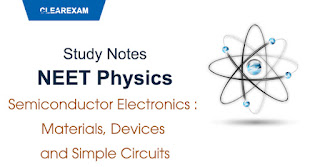
NEET Study Notes
IIT-JEE Study Resources Quick Links
- IITJEE Physics
- IITJEE Chemistry
- IITJEE Mathematics
- NEET Physics
- NEET Chemistry
- NEET Biology
Study Notes
- HC Verma Part 1
- HC Verma Part 2
- RD Sharma Class 9
- RD Sharma Class 10
- RS Aggarwal Class 10
- Lakhmir Singh Class 9
- Lakhmir Singh Class 10



